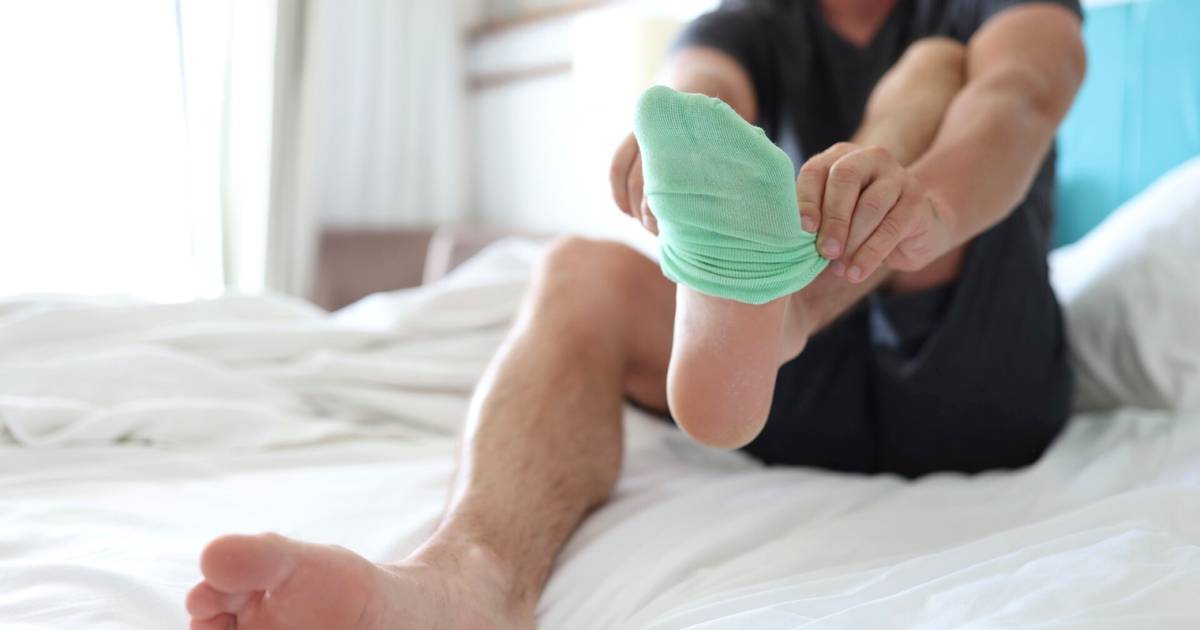Suvi Yu, 8
Feet unpleasant odor is caused by bacteria on the surface of the skin. The bacteria are activated when the skin on the feet sweats.
Sweating of the feet is quite normal in itself. The soles of the feet have plenty of sweat glands that secrete sweat. If the sweat cannot evaporate from the skin, it stays in the socks or shoes, keeping the feet moist.
Moisture leads to the growth of bacteria on the skin. The more bacteria there are on the skin, the stronger the feet smell.
That’s why it’s important to wash your feet every day.
You should always take off your shoes from time to time. This allows sweat to dry off your feet, socks and shoes. Then the bacteria can’t run amok on the skin and create a bad smell.
Minna Stolt
professor, Foot therapist
Department of Nursing
University of Turku
The glacier has shrunk considerably in the Steindalen valley in northern Norway.
Why do adults stress about climate change but do nothing?
Alisa Uutela, 10
Sometimes it can feel like no one is doing anything. However, this is not true. In fact, adults do things all the time to combat climate change.
For example, emissions due to human consumption have decreased In Finland in the 2000s, it almost halved, from 14–15 tons of carbon dioxide to about 8 tons of carbon dioxide per person.
During the previous government, climate and energy policy measures were also agreed upon, with the help of which Finland will achieve carbon neutrality by 2035.
A particularly big change is in energy production, when, for example, coal and natural gas have been replaced by renewable energy sources, such as wind power and solar power.
Because of this, Finns’ carbon footprint has decreased without us having to change our behavior.
However, in order to curb climate change, it is important to commit to carbon neutrality measures in the future as well.
Annukka Vainio
assistant professor of sustainability science
Institute of Sustainability Sciences (HELSUS)
university of Helsinki
A pike bites a swimmer extremely rarely.
How likely is it that a pike would bite a person swimming?
Hilla Kaukoranta, 6
Pike hawks very rarely swim people, I would almost like to say never.
But every now and then you can read the news that this has happened, so the probability of being bitten cannot be zero.
Maybe a couple of million people swim in Finnish lakes every year. Searches that went wrong about the diet are reported maybe once every ten years. Thus, it is clear that stepping on a nail or falling off a bicycle are much more likely to be unpleasant events. Injuries are also easily bigger.
So swimming in Finland is not nearly as dangerous as swimming on the coast of Australia, where great white sharks attack swimmers from time to time. I think swimming is the best thing a Finnish child can do in the summer, so I encourage everyone to get in the water.
There are pike in both small and large water bodies. There are even lakes in Lapland where there are no other fish species besides pike. The pike is a cannibal, which means it also eats its own species if necessary.
When breeding, pike can use really small streams. I myself started my career as a fisherman by catching pike from a shallow stream with my bare hands at the age of ten.
Sakari Kuikka
professor of fisheries biology
university of Helsinki
The world’s first telephone is from 1876.
What was the world’s first telephone like?
Silja Moilanen, 9
World the first telephone call was made on March 10, 1876 by the inventor Alexander Graham Bell. The first words sent were “Mr Watson, come here. I want to see you.”
The first phones were simple cylinders that looked a bit like stamps or spice grinders. At the bottom of them was a membrane that was either spoken to or listened to. In the United States, an early telephone was called butterstamp i.e. the sandwich maker.
When calling, the speaker held the handset in front of his mouth and the listener held it to his ear. When the listener answered, the roles switch. So the handset has to be constantly moved back and forth between the mouth and the ear.
In such a phone, it was difficult for the caller to attract the listener’s attention when the call started. In practice, this was done by shouting loudly into the phone and hoping that someone on the other end would pick up on the voice.
This was not very practical, so it was soon invented to install a separate bell near each phone. The clocks were connected to each other with a separate pair of wires. In addition, they needed their own battery.
Other manufacturers, on the other hand, added a whistle to their phone, blowing into it to create a rather strong calling sound. This is where the name whistle calling phone comes in. The first whistle was a simple one made of wood, resembling a willow whistle.
Such a phone is in the collections of Elisa’s telephone museum. It is from 1878, i.e. only two years younger than Bell’s very first telephone.
Anna Savikko
Elisa’s telephone museum
Send the question, the questioner’s full name and age to [email protected]. The column is edited by Touko Kauppinen and Juha Merimaa.
#Science #questions #kids #feet #smell









